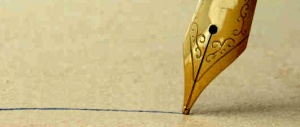Feed, nib, and ink are tuned inextricably (me)
… not only because they are the essential parts of a fountain pen. At the end of this series of articles about the pen feed, you will know why. It is an involved topic. So that you follow it more easily, I have separated the complete paper into several chapters.
§
The Feed’s Function provides a general overview and the setting of the scene. Amongst some ideas, it offers some food for thought.
The Feed’s principle will be explored under the heading Bubbles and Bottles. Here we talk about air pressure and air-liquid exchange. Why liquid flows and why it stops.
The next two chapters are on fluid dynamics. In the chapter Surface Tension, you find out why some liquids form bubbles why others don’t. And in the chapter Capillaries, I introduce you to the fundamentals of capillary forces and how to apply them.
Then all the previous information is brought together in the chapter Application to the Feed. We explore the control of the flow of ink and how the feed compensates for atmospheric changes and prevents ink from dripping from the fountain pen.
Now it’s getting serious. How does one design a feed? In the main chapter Development of the Feed, I introduce you to the ingeneering design principles as they are applied in all well-planned design approaches, moreover, I added the specifics for the feed.
In the subheading Temperature and Air Pressure, I demonstrate how the feed compensates for their impact.
When a fountain pen is used the first time it has to overcome some serious hurdles during the process of initialisation. The chapter Initial dry Start talks about this topic.
How one can make plastic, intrinsically hydrophobic, perform like a hydrophilic material, so it becomes usable for making feeds is told in my story about how I worked it out. You can read about it in Feed made of Plastic.
In the final chapter, I investigate the function of the feed as it has been applied in various fountain pens. Under the heading, In practical Terms, I will assemble a collection of examples. At the moment there is only one. Since I am not a collector of fountain pens, I rely on your support and input, meaning, sending me detailed high-resolution photos or even components (feed, nib, section and nib). Ultimately, they give the most accurate information.
Are you ready?
Please read on The Feed’s Function
Ω
Amadeus W.
Ingeneer
01 January 2019

